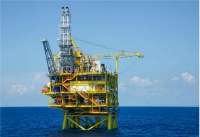OIL PRICE - LONDON. Oil prices rose as high as $60.65 a barrel on Friday after Iranian media said a state-owned oil tanker had been struck by missiles in the Red Sea near Saudi Arabia, but bearish oil demand forecasts soon pulled crude off session highs.
The Iranian Suezmax crude tanker Sabiti was ablaze and suffered heavy damage after being hit by two missiles, Iranian media reported.
Both oil benchmarks recorded their biggest daily rise since Sept. 16, the first trading day after the attacks on Saudi installations knocked out more than half of the kingdom's crude output and temporarily pushed oil prices up by about 20%.
International benchmark Brent crude futures were up 98 cents at $60.08 a barrel by 0936 GMT.
U.S. West Texas Intermediate (WTI) crude futures rose 95 cents to $54.50.
Read Also: Oil rises on hopes for deeper OPEC output cuts, U.S.-China trade talks
Iranian oil exports are under U.S. sanctions that have diminished Iran's impact on the global supply picture.
"The market still has fresh memories of the Saudi Arabia attacks and the very quick price reversals afterwards. The price results of attacks this year have not been sustained in terms of risk premium," said Petromatrix analyst Olivier Jakob.
"In terms of oil prices, the impact is limited unless you think Iran is going to retaliate in the Strait of Hormuz ... It's going to be more supportive in the freight market. Potentially it can increase insurance premiums (on tankers)."
The UNited States has issued sanctions on units of Chinese shipper COSCO, alleging involvement in ferrying crude out of Iran, which has boosted rates for oil tankers.
Tensions in the Middle East have escalated in the wake of attacks on tankers and U.S. drones in the Strait of Hormuz, a key shipping artery for global oil trade.
Keeping a lid on prices, the International Energy Agency (IEA) on Friday said that global oil markets had recovered quickly from the Saudi attacks and even face oversupply next year as global demand slows.
Read Also: OPEC chief says deeper oil cut an option amid weaker 2020 outlook
Troubled economic prospects for 2020 prompted the IEA to reduce its forecast for oil demand growth by 100,000 barrels per day (bpd) to 1.2 million bpd.
"The market will be weighing this attack against the more bearish headlines stemming from the IEA's latest monthly oil market report," BNP Paribas global oil strategist Harry Tchilinguirian told the Reuters Global Oil Forum.
/2019/08/19/1342583044p.jpg)









